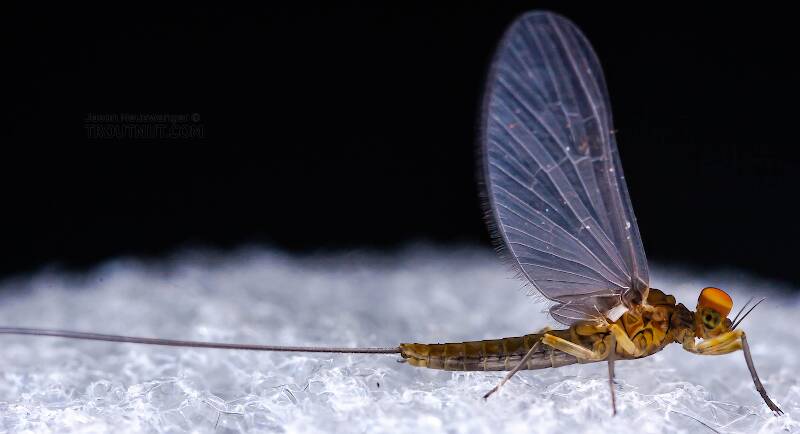
Blue-winged Olives
Baetis
Tiny Baetis mayflies are perhaps the most commonly encountered and imitated by anglers on all American trout streams due to their great abundance, widespread distribution, and trout-friendly emergence habits.
Featured on the forum
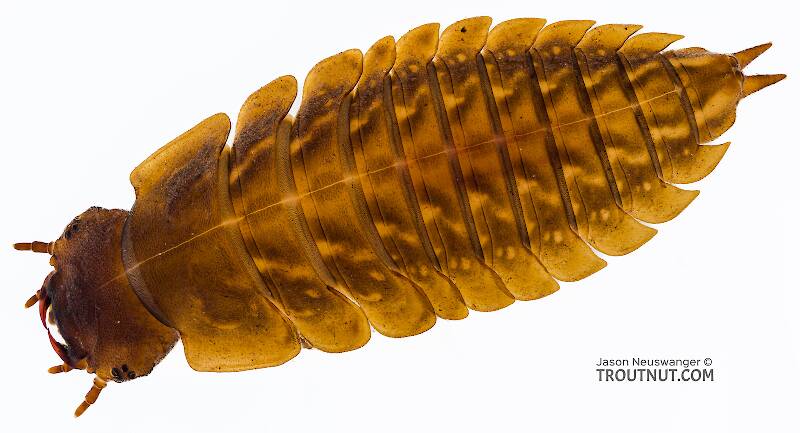
This is the first of it's family I've seen, collected from a tiny, fishless stream in the Cascades. The three species of this genus all live in the Northwest and are predators that primarily eat stonefly nymphs Merritt R.W., Cummins, K.W., and Berg, M.B. (2019).

Troutnut is a project started in 2003 by salmonid ecologist Jason "Troutnut" Neuswanger to help anglers and
fly tyers unabashedly embrace the entomological side of the sport. Learn more about Troutnut or
support the project for an enhanced experience here.
Cheumatopsyche (Little Sister Sedge) Caddisfly Adult Pictures
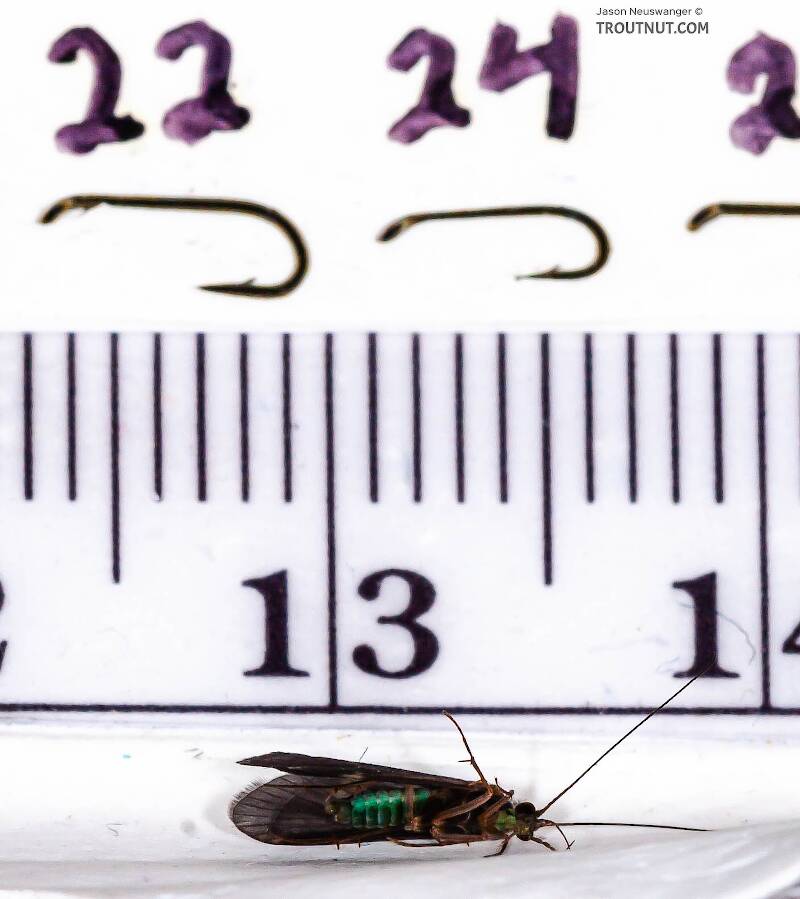
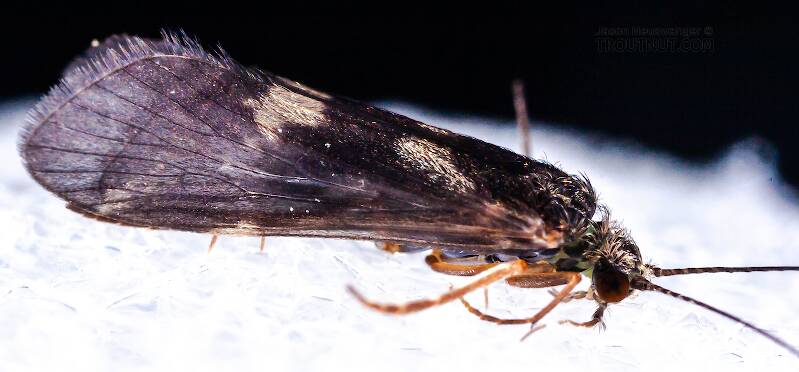
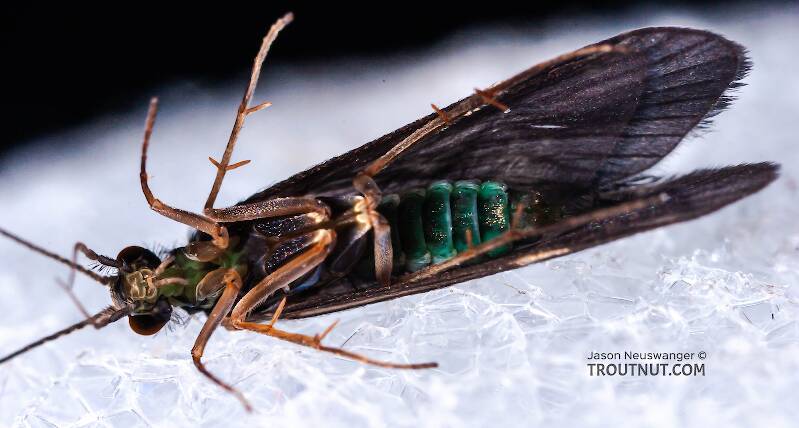
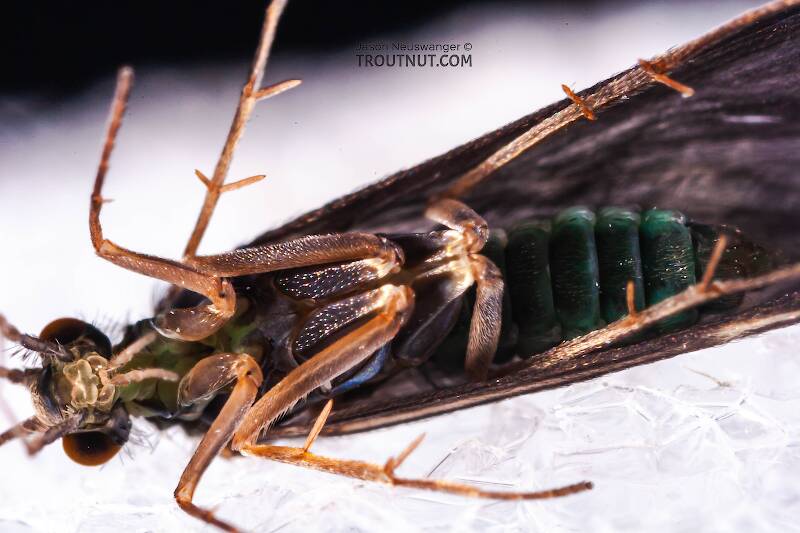
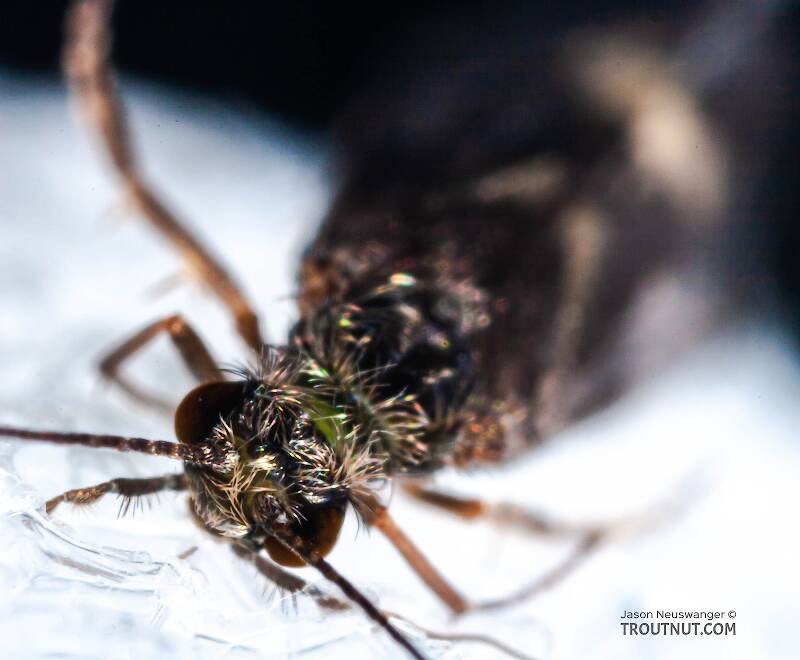
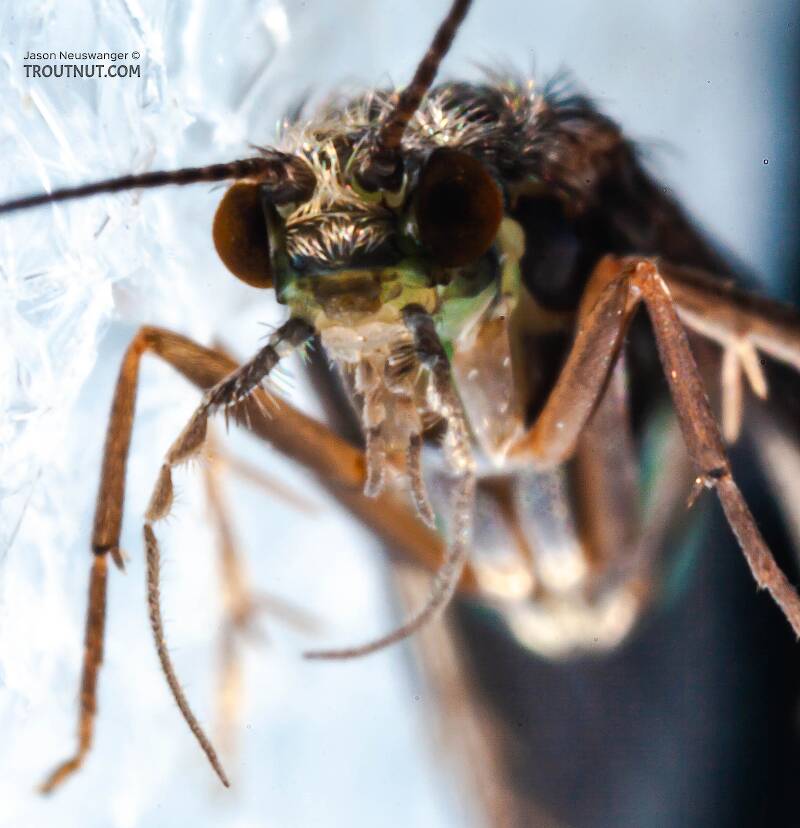
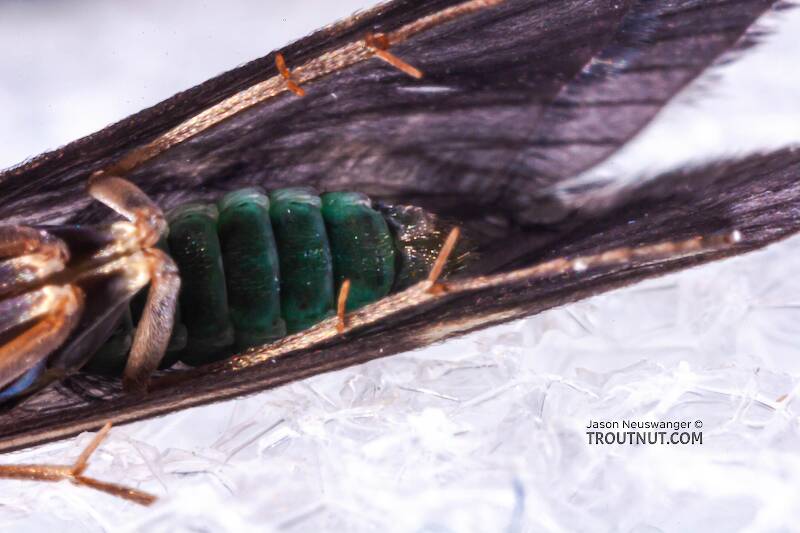
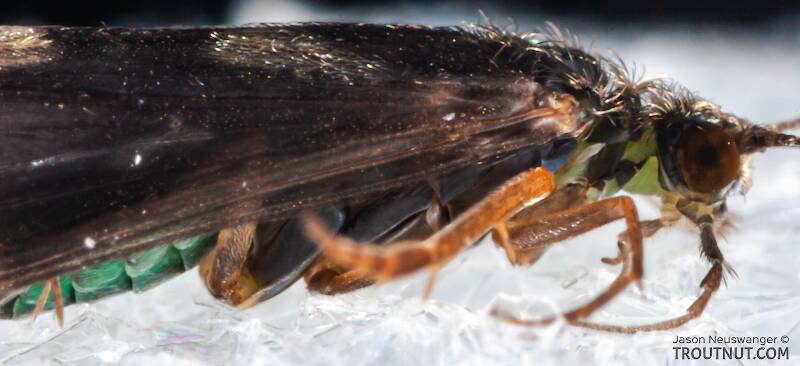
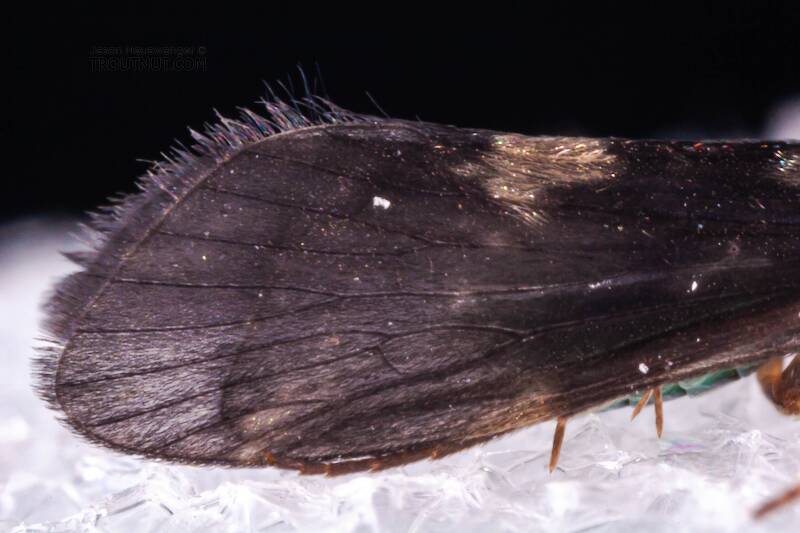
This caddisfly was collected from Mystery Creek #43 in New York on September 19th, 2006 and added to Troutnut.com by Troutnut on October 4th, 2006.
Discussions of this Adult
Cheumatopsyche
Posted by Litobrancha on Oct 20, 2006
Last reply on Oct 20, 2006 by Litobrancha
a great thing about cheumatopsyche (which i believe this is) is that the IX segment ventral plates are almost always completely differentiated to the base. hydropsyche medial margins are more indistinct near the base.
also cheumatopsyche almost always lacks F1 in the hind wings, although aberrant specimens are common. the best character is the distance between M and Cu veins in the hind wing, other hydropsychids are parallel and close together, cheumatopsyche diverges a bit.
also cheumatopsyche almost always lacks F1 in the hind wings, although aberrant specimens are common. the best character is the distance between M and Cu veins in the hind wing, other hydropsychids are parallel and close together, cheumatopsyche diverges a bit.
Looks like Cheumatopsyche
Posted by GONZO on Oct 6, 2006
Last reply on Oct 6, 2006 by GONZO
Really cool pictures, Jason. My first impression was classic Cheumatopsyche (Little Sister Sedge), and I can't find anything to indicate otherwise--size, color, maxillary palp, and wing all seem right on. Wish I could help with the species, but with many caddisflies I'm happy just to get the genus right. :)
It is interesting to note that some books say that the coloring of many Cheumatopsyche species gets lighter as the season progresses. That certainly doesn't seem to be the case here.
It is interesting to note that some books say that the coloring of many Cheumatopsyche species gets lighter as the season progresses. That certainly doesn't seem to be the case here.
Start a Discussion of Adult
References
- Merritt R.W., Cummins, K.W., and Berg, M.B. 2019. An Introduction to the Aquatic Insects of North America (Fifth Edition). Kendall/Hunt Publishing Company.
Cheumatopsyche (Little Sister Sedge) Caddisfly Adult Pictures
Collection details
Location: Mystery Creek #43, New York
Date: September 19th, 2006
Added to site: October 4th, 2006
Author: Troutnut
Date: September 19th, 2006
Added to site: October 4th, 2006
Author: Troutnut

